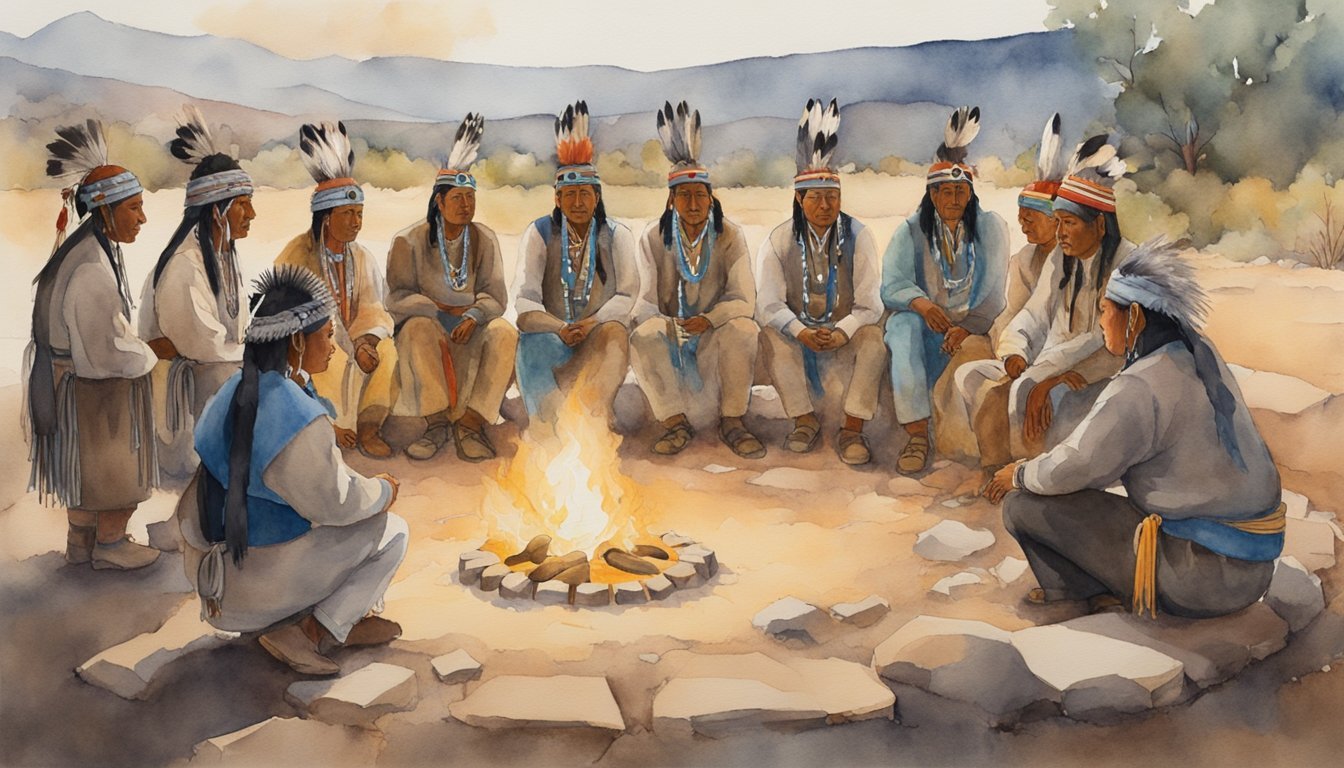Zuni Tribe History and Demographics
The distinct history and demographics of the Zuni Tribe offer insight into a rich cultural tapestry, formed over many centuries in the American Southwest. These people have maintained a unique identity and language, supporting a community deeply rooted in ancestral traditions.
Origins and Ancestry
The Zuni people are believed to be the descendants of the Ancient Puebloans, who were part of the Anasazi culture tracing back to well before 2500 B.C. This lineage positions the Zuni as one of the oldest indigenous cultures in North America. The Zuni’s ancestral homeland spans the Zuni River valley, a tributary of the Little Colorado River, predominantly within the modern borders of New Mexico, though their original territory stretched into parts of Arizona.
Historical Encounters
Historically, the Zuni first encountered Europeans when Spanish explorer Francisco Vásquez de Coronado led an expedition in search of the fabled Seven Cities of Cibola in 1540. The arrival of the Spanish marked a significant shift in Zuni history, introducing new elements to their culture and community dynamics. Prior to these encounters, the Zuni people lived in multi-storied houses made of stone and adobe, an architectural style they maintain to this day in the Pueblo of Zuni. Notably, the region known as the Dowa Yalanne, or “Corn Mountain,” stands as a testament to the Zuni’s historical ability to defend their land against adversaries, including the Spanish.
Population and Language
Today, the Zuni people are federally recognized as the Zuni Tribe of the Zuni Reservation in New Mexico. They are known for their unique language, which is classified as a language isolate within the Penutian family. It is entirely unrelated to the neighboring languages of the Navajo and Hopi tribes. According to reports, the Zuni Pueblo is the largest of New Mexico’s nineteen pueblos, with a population that continues to preserve and practice their ancestral traditions, art, and way of life along the banks of the Zuni River.
Culture, Community, and Traditions

The Zuni tribe, known for their unique artisan skills, deeply rooted spiritual customs, and communal agriculture practices, have maintained a vibrant culture that exemplifies the resilience and creativity of Native American communities in the Southwest.
Artisan Crafts and Jewelry
Zuni artisans are highly renowned for their intricate silver jewelry studded with turquoise, a tradition passed down for generations. Their craftsmanship extends to beautiful pottery, often adorned with motifs that carry cultural significance. Zuni artwork is not just a form of economic sustenance but also a means to keep their heritage alive.
Religious Beliefs and Rituals
The Zuni people possess a complex religious structure, consisting of numerous kachinas, deities that play a central role in the spirituality of the Pueblo peoples. Rituals are a cornerstone of Zuni life, involving intricate ceremonies, prayer sticks, and dances that are thought to bridge the natural and supernatural worlds.
Agriculture and Cuisine
Corn is the pillar of Zuni agriculture, sustaining the community for centuries through methods like irrigation, which allow cultivation in arid conditions. Zuni cuisine is a reflection of their agricultural practices, with dishes centered around corn, beans, and squash, supplemented by hunting local game such as deer.
Social Structure
The social framework of Zuni is built upon matrilineal clans, where lineage and inheritance are traced through female lines. This structure emphasizes the integral role of women within the community, not only in familial aspects but in cultural preservation. The governor, a key figure in their government, works closely with the tribal council to administer the community’s affairs.

